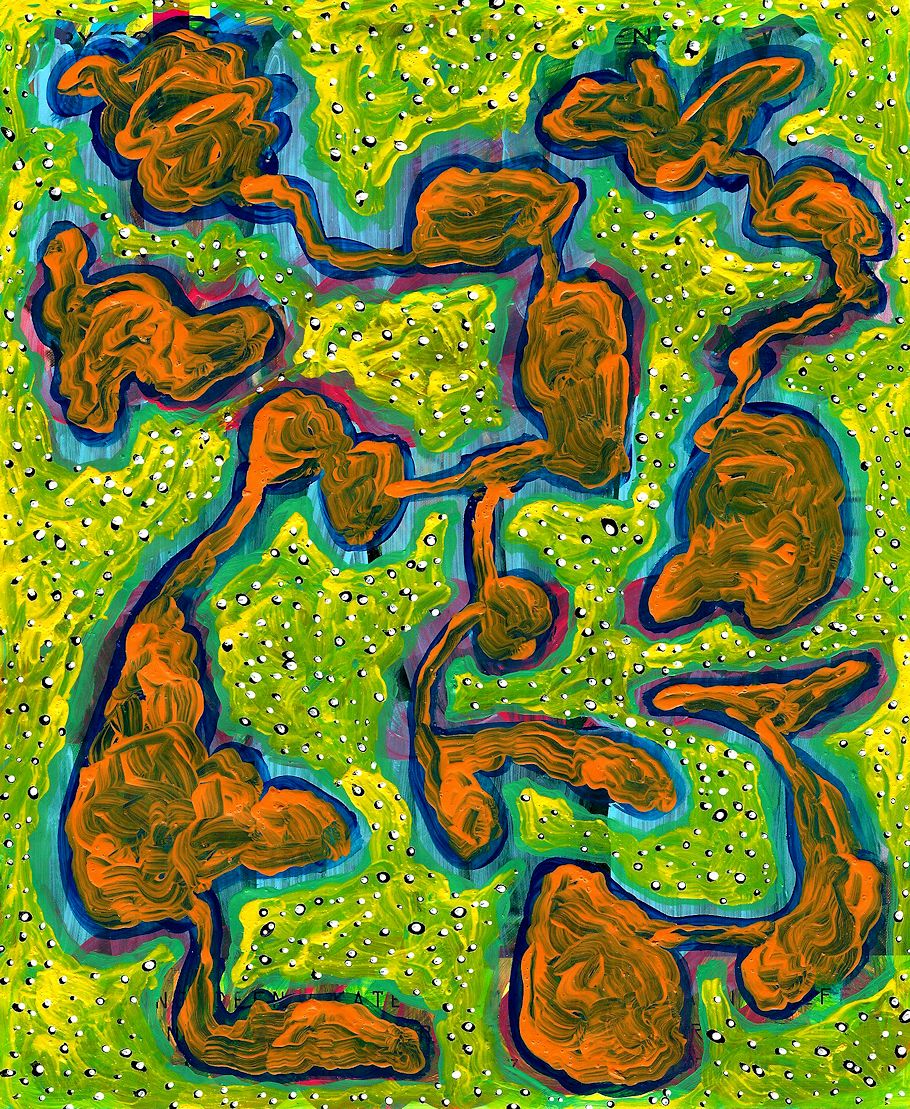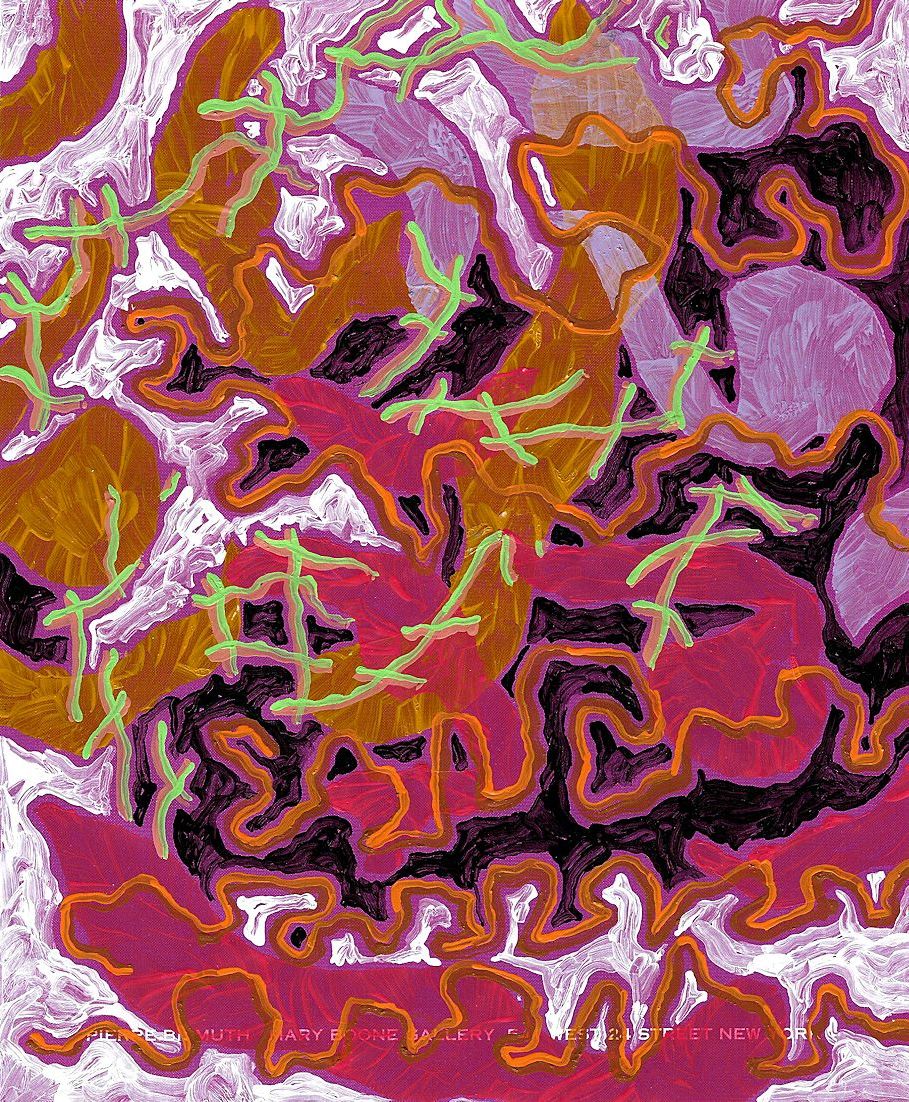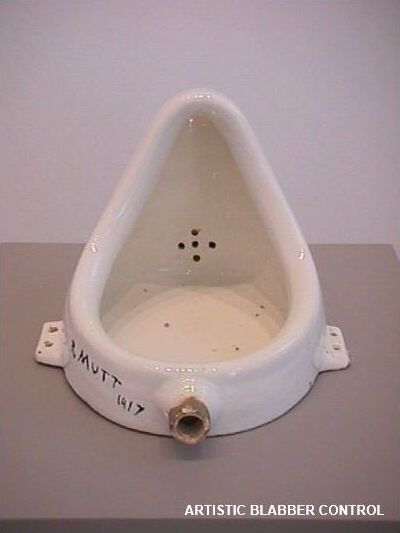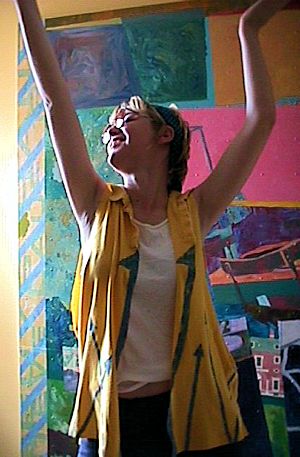
Mary Boone's 180 hours of community service hour 42
2019.04.06

Mary Boone's 180 hours of community service hour 43
2019.04.06
Understanding Duchamp
don't waste your time

2005.04.06
House in Ottopia 76
2004.04.06
House in Ottopia 79
2004.04.06
being/critical
Anna, my assistant this past summer, was quite surprised when I asked her to model my fashions so I could photograph them, but I must say she did it in style. For example, when I asked her to pose while figuratively reenacting The Rape of the Sabine Women by Poussin, she immediately knew what to do.
 
2002.04.06
ironically, I never mentioned skin
After I wrote:
"Is not the 'architecture' of the human body an envelope rammed full of 'attributes' that DO NOT show their 'implementation' on the outside? For example, breasts with nipples hardly reflect either the lungs or the pumping heart inside, likewise the one-piece torso offers little 'superficial' indication of two cavities inside. And further, isn't the sublime singularity of the navel very much like the exact opposite of the twisting, turning, asymmetrical intestines just inside? [And just think how literally close the activities within barber shops and beauty parlors come to the activities inside the brain, yet who would dare say that these two activities share the same "function"?]"
John Young and Van Varga both replied with immediate references to corporal skin. This epidermal connection is appropriate because our skin is indeed our corporal envelope, however, I wish to stress that the examples I used (breasts, nipples, torso, navel, head of hair) where not about skin, but rather corporal design features specific to the body's surface--yes skin is involved as the predominant material application of these features, but skin is not what predominates the design; our skin is what adapts to the design.
Van also mentioned the sense of touch integral to skin, and this undeniable connection has truly provocative architectural design implications, i.e., envelopes that feel and or respond to contact (or, as inspired by John Young, building surfaces that (visually) indicate how they are "feeling"). About five years ago, while I was heavily doing research regarding (the theory of) chronosomatics, I came to the conclusion that touch is the first sense to have come into being, and that touch/contact was/is indeed the medium by which "life" itself began. Not only did touch exist before tasting, smelling, hearing or seeing, but, most of all, it was the contact of two otherwise lifeless entities that 'spawned' animate life. Moreover, it can well be argued that tasting, smelling, hearing, and seeing are really only very specialized touch/contact senses. Note also that the sense of touch is not just an attribute of the body's external skin, but a sense indigenous to all parts of the body inside and out.
So what were these two lifeless entities that spawned life through contact with each other? Of course, my answer is that I reasonably assume the true answer may at this late point never re-appear, and that even a reenactment would fall far, far short of the original event. Nonetheless, I believe there is a very significant clue as to the 'scenario' of that first contact right on our own bodies, specifically at the body's extreme external tips, i.e., the tips of our toes and the tips our fingers. It is there that last vestiges of humanity's physical hard external shell still exists, namely our nails, and right underneath our nails are those cross-sections of our body's that are largely just skin. I theoretically propose that this soft entity under a hard entity represents the same conditions that first spawned life. Essentially, it was something soft and vulnerable that found "security and protection" under something hard and more permanent. Animate life began when the contact between the soft and the hard actually became a bond, and thus too the sense of touch came into being.
Now skipping millions of years on the evolutionary scale, I see this soft/hard duality as the beginning of two sexes as well. Contrary to common perceptions, it is the female that is hard and the male that is soft. In simple undeniable terms it is woman that enables embryonic development within her own body--women's bodies themselves are a hard protective shells (only women corporeally possess and facilitates the human egg that in turn allows fetal development). Men, on the other hand, very much do not have that "built-in" protectiveness, hence men make great displays about forever being on the defensive, and indeed it is almost exclusively men that have continually created our planet's foremost industry, if only to create that protective shell that their sex was not born with--the age old military apparatus (shields, armor, war ships, submarines, tanks, stealth bomber, etc. are all "man"-made protective shells).
So what then is architecture? Is it a hard, 'simple', 'natural' protective shell that engenders the continuation of life? Or is it a soft formlessness forever (re-)designing an applied shell it doesn't naturally have?
2000.04.06
 
overall, one very Piranesian daze
...the first documentation of the heretofore undetected two differing published states of Piranesi's Ichnographia Campus Martius, the six fold-out plates that comprise a reenactment plan of ancient Rome within Piranesi's larger Il Campo Marzio dell'antica Roma 'archaeological' publication. After many years of redrawing and analyzing a printed reproduction of the Ichnographia, I went, on May 14, 1999, to see an original version of the Ichnographia at the University of Pennsylvania's Fine Arts Library. Within minutes of having a 'real' Ichnographia unfolded in front of me, I noticed that the Circus of Caligula and Nero is not only labeled, but also configured somewhat differently than the circus plan I was used to seeing. Of course, I was instantly very excited because nowhere have I ever read about the Ichnographia having two editions/states (like Piranesi's Carceri/Prisons have two published states/editions), and these two different plans are definitely not noted within Wilton-Ely's recent Giovanni Battista Piranesi - The Complete Etchings. Moreover, I believe I discovered something that no other architect, architectural historian, or art historian had noticed before. I then quickly scanned the rest of the plan to see if any other differences existed, and, sure enough, the Circus Agonalis is likewise different than the plan commonly reproduced. On 4 April 2000, I finally returned to Penn's Fine Arts Library to document the two different Ichnographia via tracings and taking digital images
2000.04.06

View On
of
The Dark Shadows Series
1985.04.06

detail of
Return to Prior Level
of
The Dark Shadows Series
1985.04.06
|